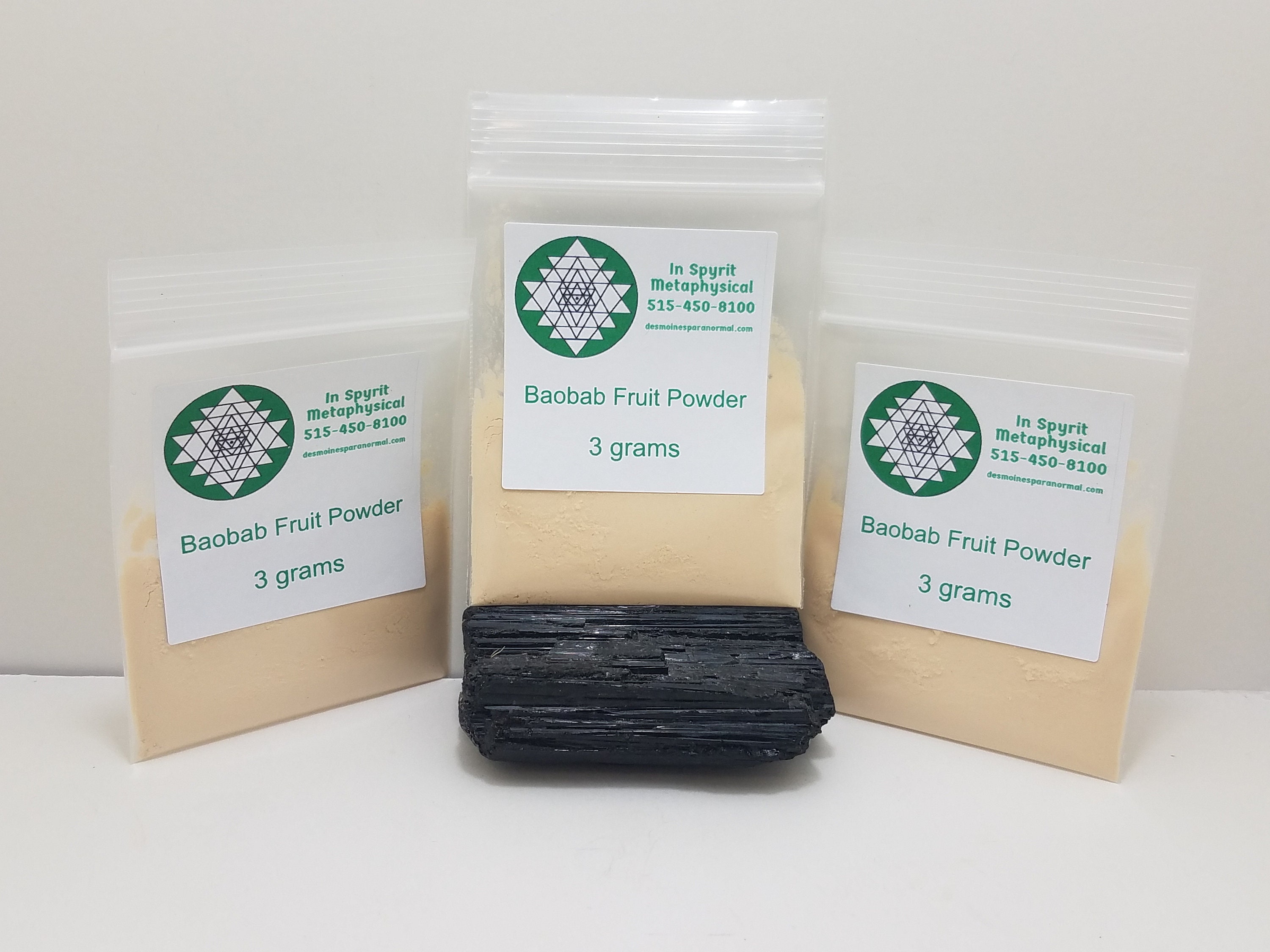Metaphysical Properties Of Baobab Fruit

Official Name: Adansonia digitata
Gender: Masculine and Feminine
Planet: Earth
Element: Divine Spirit
Deity: Osanyin, Aja (Goddess), Oko, Ososhi
Sabbat: Mabon
Metaphysical Powers: Ancient Awareness, Divine Communication & Blessings, Generosity, Grounding & Earth Wisdom, Knowledge, Natural Abundance, Spiritual Power, Sustenance, Transitioning to the Spirit World, Travel
Magickal and Traditional Uses and Folklore of Baobab Fruit
Baobab is the extraordinary superfruit of Africa's Tree of Life. It also grows in Australia and the Middle East. It is the only fruit that dries instinctively on the branch. After baking in the sun for six months, the baobab's prickly green, furred coating changes into a smooth brown, coconut-like shell.
It is almost 50% fiber (two-thirds soluble and one-third insoluble, making it a powerful prebiotic) and contains more antioxidants than any other whole fruit. It is a natural source of these nutrients; it is more bioavailable than mass-produced vitamin supplements. Our bodies can absorb the nutrients more efficiently, ensuring a greater uptake.
Baobab fruit is edible, and the seed powder is used in foods for its nutrients, health benefits, and organic preservative.
It is an excellent vitamin C, potassium, carbohydrates, and phosphorus source. The fruit is found in the hard pods that hang upside down from the tree and has a citrus flavor.
Traditionally, baobab leaves, bark, and seeds are used to treat "virtually any disease," including malaria, tuberculosis, fever, microbial infections, diarrhea, anemia, toothache, and dysentery.
The leaves and fruit pulp are used to reduce fever and accelerate the immune system. It holds deep spiritual significance to the communities that live around it.
Stories of the baobab are as old as man; baobab means "the time when man began."
Rights of passage, spiritual ceremonies, village meetings, and shade seeking occur beneath these massive trees that are hundreds to thousands of years old. The trees are so sacred in their communities that many trees receive human names or Um, which means mother. It is believed the spirits of ancestors are a part of the trees. Baobab Fruit delivers nourishment from the water they store in their leaves, seeds, and especially the dried pulp found in their fruit. One tree can store up to 30,000 gallons of water at a time.




